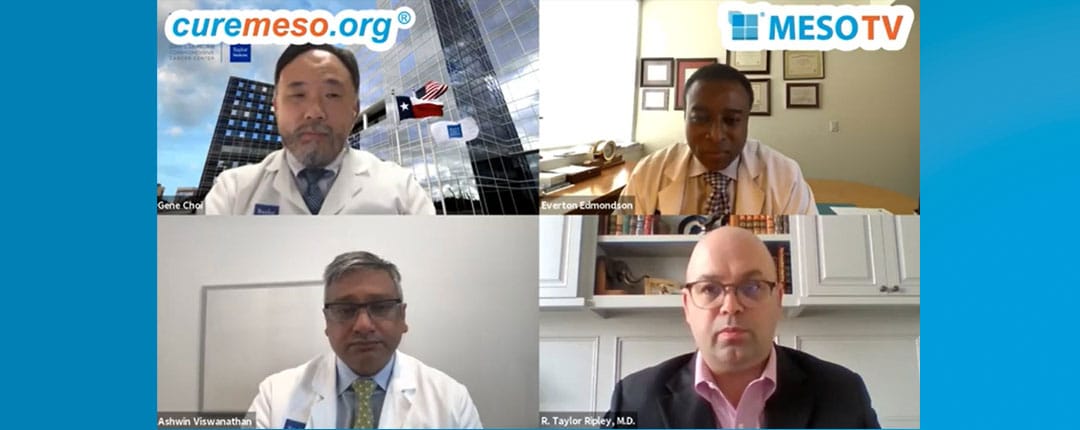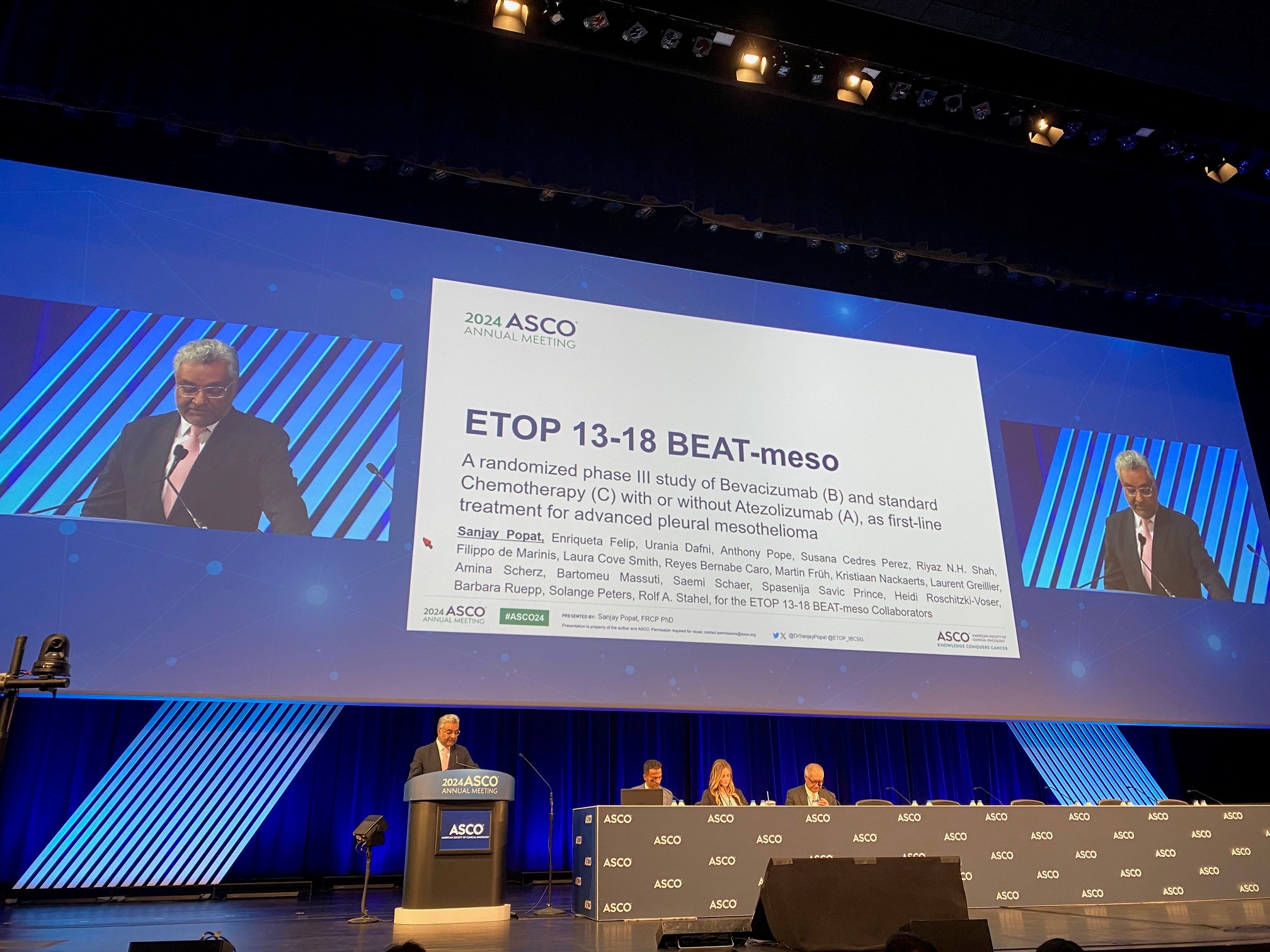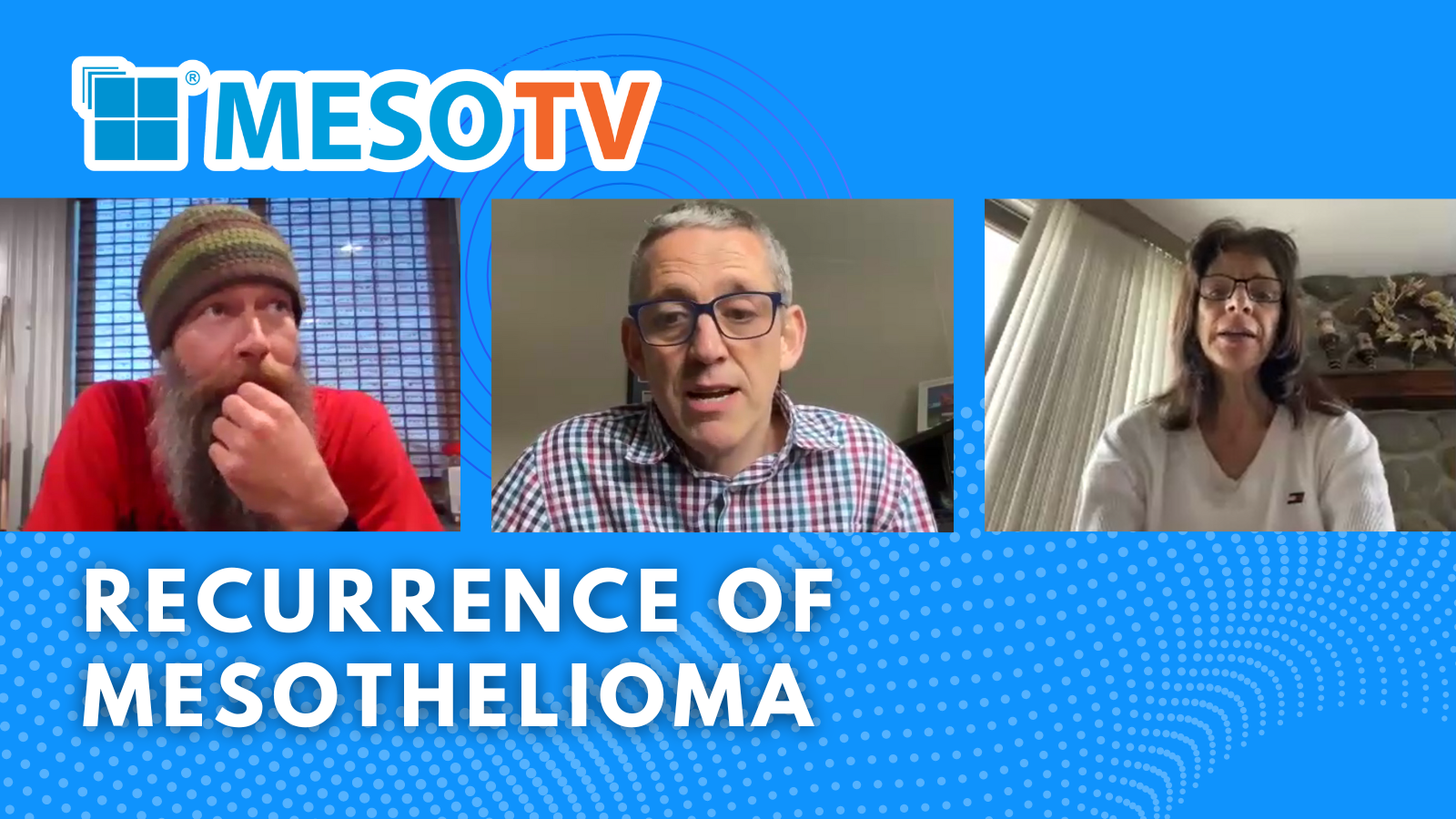This episode of MesoTV tackles the topic of managing pain caused by mesothelioma or its treatment. Four experts from the Baylor College of Medicine discuss pain management and ways mesothelioma patients can improve their quality of life. Dr. R. Taylor Ripley, a thoracic surgeon, moderates. The panel includes:
- Dr. Eugene Choi, a surgeon, who specializes in peritoneal mesothelioma
- Dr. Everton Edmondson, a neurologist and pain specialist
- Dr. Ashwin Viswanathan, a neurosurgeon with interest in cancer-related pain
PAIN REDUCTION
Dr. Viswanathan said options have evolved over the past 10 years for patients with persistent pain. There are three things Viswanathan suggests to reduce it and make patients more comfortable.
“Many procedures are minimally invasive and 30-45 minute procedures and have good evidence of improving quality of life significantly,” Viswanathan said.
First, doctors can stimulate the nervous system. This happens when the spinal cord is electrically stimulated through an implantable device. Patients with pain related to surgical procedures or nerve injury could benefit from this. Second, infusing medications into the spinal fluid can be helpful to prevent systemic side effects associated with pain medications. Third, doctors can find ways to interrupt how pain is transmitted in the nervous system. One way of doing so is known as cordotomy, which interrupts the pain pathway within the spinal cord. This procedure is typically used with mesothelioma patients.
WHO IS A CANDIDATE FOR CORDOTOMY
A cordotomy is a way of interrupting a pain pathway in the spinal cord. That pathway is called the spinothalamic tract. This is done with just a needle. A cordotomy is not a surgery, but rather an intervention where doctors place a needle and ultimately an electrode within the spinothalamic tract in the spinal cord. This helps patients who have cancer and patients who have pain on one side of the body.
“For mesothelioma, this would be used for patients with chest wall pain. Promising results could come from a cordotomy. The intervention can be done more than once, which could provide immediate and long term relief for cancer pain,” Viswanathan said.
TYPES OF PAIN MEDICATION
Opioids and non-opioids are both types of analgesic drugs, also known as drugs that treat pain. For mild pain, patients can use ibuprofen or acetaminophen. This can be something like back pain, dental pain or a bruise. Opioids are stronger medications to control pain. Neuropathic adjuvant drugs can treat pain that is generated by irritation of the nervous system where pain is enhanced by inflammation in the tissue that interacts with the neural structures. Cancer specific adjuvants are helpful because the nerves where the tumor is can be irritated as well.
Dr. Edmondson said doctors will be as sparing as possible with medications that cause sedation, which could cause drowsiness. Instead of using a high dose of an opioid they can combine drugs that decrease sensation in the neural bed. If necessary, they can cross over into interventional approaches such as nerve blocks.
“If someone has upper abdominal pain then they can do a celiac plexus block. Later in the course if the intervention is ineffective then a surgical approach can be used,” Edmondson said.
A celiac plexus is one such surgical intervention and it can be administered in two ways. Either by a gastroenterologist through an endoscopy in the area where the celiac plexus is or by the neurologist through the spine.
CHANGE IN PAIN
Dr. Choi said peritoneal mesothelioma pain can feel dull, achy and generalized, but patients can have a change in nature or characterization in the pain. This makes Choi wonder if there is involvement of muscle or an area that might be good to debulk the tumor. This would help alleviate symptoms.
“When patients come to me with new symptoms of pain that is not generalized, I often worry that there may be some kind of growth that is encroaching on something critical like bone, nerve or vessels,” Choi said.
In that case, there is often a surgically corrective cause. Choosing whether to perform the surgery depends on whether the patient is ready/able to have surgery and whether the procedure is going to have a durable response.
“We don’t want to add to the problem of doing an unnecessary surgery,” Choi said.
Peritoneal mesothelioma patients can feel pressure from fluid buildup. Not necessarily pain, but Choi said there could be considerable discomfort. They can have shortness of breath caused by the pressure of the fluid on their diaphragm.
When disease is not controlled by chemotherapy and patients present with intractable ascites, a catheter is preferred to paracentesis because of continuous fluid build-up in those situations. At that point a catheter can be placed or paracentesis performed, but a catheter is preferrable.
Likewise, in patients whose disease cannot be debulked who have intractable ascites a good approach is to place HIPEC catheters, which alone can dry up the ascites. When patients can be made more comfortable they tend to tolerate additional treatments better, and will often regain their appetite.
When malnutrition and weight loss are caused by abdominal protein and fluid drainage through a catheter, dieticians can help patients avoid malnutrition by prescribing IV fluids as a way to stabilize their weight and improve nutrition and appetite.
“We emphasize nutritional supplementation at every step of the process,” Choi said.
Dr. Viswanathan and his colleagues said they don’t want patients to suffer. They all agree the time to consider pain management interventions is when medication or other strategies have not been successful and pain is interfering in quality of life.
Our sponsors
MesoTV is a program by the Mesothelioma Applied Research Foundation. This program is made possible by our generous sponsors: Maune Raichle Hartley French & Mudd, LLC (MRHFM); Belluck & Fox; Bristol Myers Squibb; Novocure; Merck; The Gori Law Firm; Early Lucarelli Sweeney & Meisenkothen.





